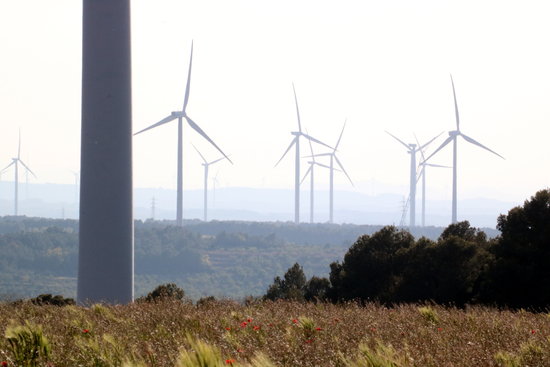Power shifts in southern Catalonia - from nuclear to wind
Many locals in the Terra Alta region are fed up with the number of wind farms being built in their area

Nuclear power is what Catalonia has run on for decades. The Ascó power plant has been in operation for over thirty years, and the Vandellòs center has had a nuclear power plant in operation ever since 1972.
Problems are coming soon for the people living in these areas of southern Catalonia, where the majority of nuclear plants in the country sit. The Ascó plant only has about ten more years of operation left in it, before a dismantling process of about another ten years will be necessary.
When the plant goes, opportunities for work will abandon the area with it. However, a new source of energy is taking its place in Catalonia - wind power.
Catalan wind power
Catalonia has the capacity to create 1,269 MW of electrical energy from wind power each year, surpassing the output potencies of countries such as Morocco, Egypt, and Argentina.
Wind parks like that of La Fatarella, just outside the town of Ascó, starting popping up around southern Catalonia in the 1990s. However, they’ve not been without their own issues for the people living in the area.
People have complained about how much an eyesore wind power is, and the infrastructure needed for the energy source. On top of that, locals say building so much on these sites around the county of Terra Alta disrespects the memory of those who died in the battle of the Ebre, the longest and largest battle in the Spanish civil war.
Maximum capacity
Terra Alta only accounts for 0.16% of the total population of Catalonia, but provides 25% of the country’s wind energy. With 30 new wind turbines in construction in the county, that output figure will rise to 45%, a level some locals say is far too high.
Xavier Fortuño, a member of the Defense of Terra Alta platform, said in a public forum discussing the issue: “Catalonia will always want to build more wind parks, but if the new law puts limits on the density of them, to prevent over-development, then we (in Terra Alta) have already filled our quota.”
Broken promises
Job creation, advanced schools, improvements on rural roads; many promises were made and broken to the people of southern Catalonia when the wind turbine projects were first presented.
Not only have these initiatives failed to materialize, but locals even say that the wind parks are having a negative effect on rural tourism, and are damaging some of the vineyards here too.
The area of Terra Alta is known to produce some of the finest wine in Catalonia, and has a high ‘Denomination of Origin’ status in the classification system of wine. Jordi Rius of the local wine regulatory council backed up the idea that the wind farms failed to deliver on their promises for the area.
“In towns with wind parks, the population decline is becoming more and more of a serious issue,” Rius explains. “They told us the total opposite, that the parks would create jobs and wealth in our area.”
The government is currently planning on building seven more wind farms in southern Catalonia, and with experiences from the last two decades of the wind project in mind, they may face opposition to the parks from locals, leading to a continued standoff between the authorities and rural populations.